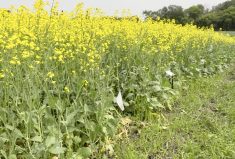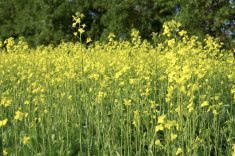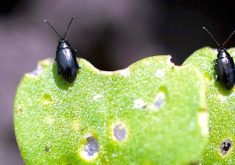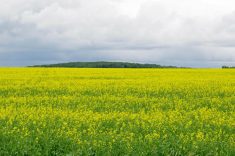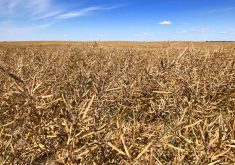CANOLA COUNCIL OF CANADA RELEASE
With the push towards earlier seed commitments for canola, variety selection decisions for the 2009 crop have already started. “Selecting the best varieties for your farm can be a tough call so make sure each choice is an informed one,” says Doug Moisey, Canola Council of Canada agronomy specialist.
First, consider which varieties have been proven performers on your farm – keeping some canola acres planted to what you know can often be a good place to start. Then, look at new varieties coming on stream – improved technology may have a great fit in your area so consider introducing some new varieties on a small number of acres. Starting small will allow you to evaluate how a new variety will perform on your land, under your management.
Read Also

Manitoba sclerotinia picture mixed for 2025
Variations in weather and crop development in this year’s Manitoba canola fields make blanket sclerotinia outlooks hard to pin down
Short list
When starting to come up with your “short list” consider the weed control system, blackleg resistance rating, maturity, lodging resistance, cost and yield potential for varieties in your growing season zone. Make sure to choose suitable varieties for your area.
“It is better to select a variety with slightly lower yield potential that will actually mature in your area than to choose one with higher yield potential that has a very slim chance of finishing,” Moisey reminds growers.
There is a lot of head-to-head comparison data available from companies right now. Reviewing data on competing varieties across many locations can provide some excellent information on a variety’s potential. Make sure to look at consistency of trial results. Similar yield results across multiple trial sites in your growing season zone indicates a variety has more consistent performance under a range of conditions relevant to your farm.
Differences
Keep in mind that small yield differences between varieties are usually not signifi-cant.
And as is the case with any purchase, don’t be afraid to ask lots of questions. When looking at trial results, consider asking your seed supplier about things such as standability, growing season precipitation, fertility program and ease of swathing to help you evaluate a variety’s true potential for your farm.
Other sources of varietal information will soon be available in the form of PCVT (Prairie Canola Variety Trial) results distributed through publications such as Canola Digest and provincial seed guides.
Additional data is also available through the Canola Performance Online Database (POD) at www.canolacouncil.org/POD.
The last thing to remember is to lock in enough seed. Keep in mind your target for next spring should be about 10 viable canola plants/sq. ft. to give any variety the best possible start. When calculating your seed order, remember that this translates into roughly five pounds per acre for average-size seed under normal conditions.






